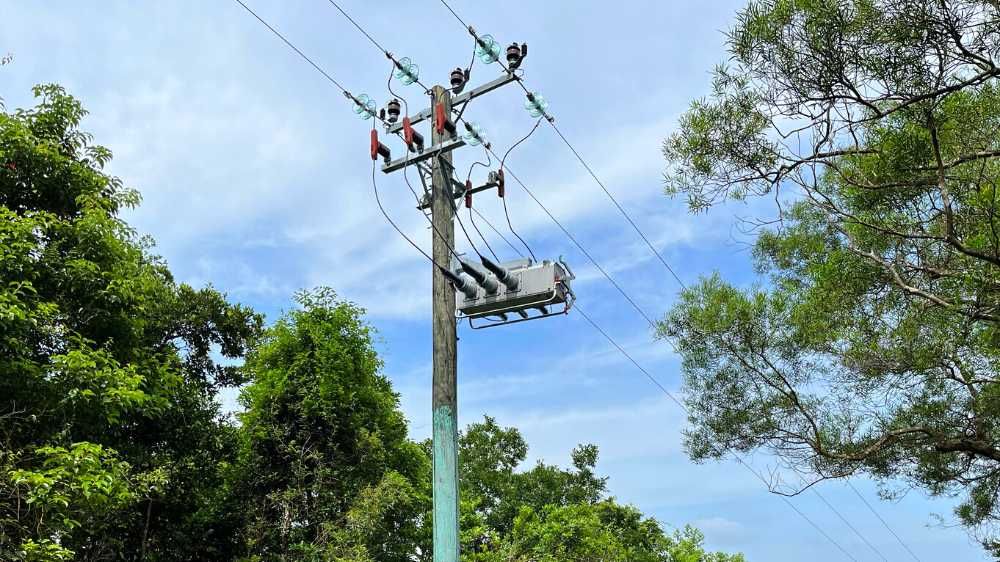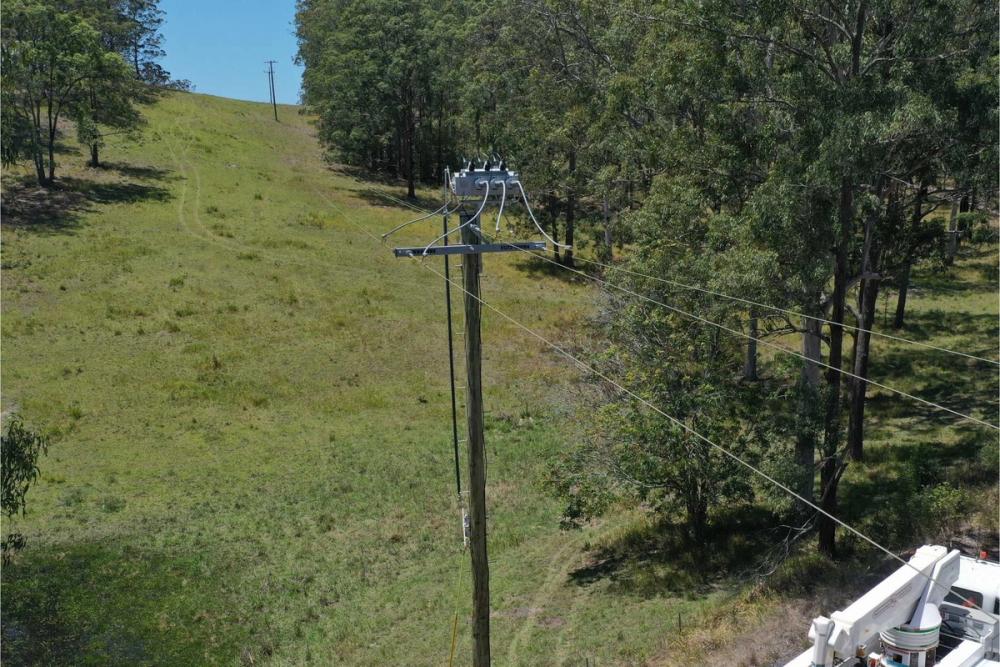Technical Article
Published 01/2024
How to Improve Load Break Switch Reliability

Load Break Switches (LBS) are a fundamental technology in overhead electricity distribution. They are among the earliest equipment developed for the distribution network. Aside from their basic functionality of switching parts of the network on and off, they allow engineers to divide the overhead distribution network up into smaller zones, minimising the number of customers disconnected when a zone of the network has a problem (or a fault).
Over the years of electricity distribution networks, multiple device designs have been approved and used. Among the earliest designs were Air Break Switches, before the techniques of enclosed SF6 designs were adopted in distribution networks in the 70s and 80s.
In this article, we explore the modern technique of applying solid dielectric insulation to load break switches, combining the reliability of an enclosed switch with the environmental sustainability of an SF6-free design.

Why do I need a Load Break Switch when my network already has Reclosers? Don’t they also turn the network on and off?
LBSs provide a working point of isolation for network operators. That is, they are designed to provide a Basic Insulation Level (BIL) across the switch that meets the IEC62271-103 standard for alternating switchgear up to and including 52 kV.
This standard has a higher requirement for BIL than devices such as reclosers. Reclosers are compliant to IEC62271-111, and need a series connected IEC 62271-103 compliant device to be used as a working point of isolation.
Air Break Switches
Air Break Switches are mechanical devices with exposed contacts. They rely on the distance between contacts in an open air environment to provide the required insulation. At medium voltage levels, this can make these devices relatively large, but their simplicity makes them relatively cheap to make.
However, there are two major problems with this design. Firstly, the mechanism and contacts are exposed to the environment. Since switches are operated infrequently, this environmental exposure leads to corrosion and damage to the mechanism and contacts. When the device fails, network operators need live-line access teams, or to operate an upstream switch, to maintain the device that needed to do the switching.
Ultimately, the cheap upfront price is mostly offset by maintenance and operating reliability costs.
Secondly, exposing the insulation gap to air adds a risk for operators. In the open position, if a bird flies between the contact gap, the insulation is compromised – with unfortunate consequences for all involved.
Enclosed SF6 Switches
These limitations of reliability, and the advent of SF6 insulation, led to the development of enclosed SF6 switches. The contacts of the switch were encased in a sealed metal tank, and pumped full of Sulphur Hexafluoride (SF6) gas.
This technique mitigated the reliability issues of Air Break Switches, but it removed the ability for works crews to inspect the insulation gap. Operators had to rely on the gas and external indicators as confirmation of the insulation.
The other major drawback is that SF6 is the most potent greenhouse gas known. One kilogram of SF6 is equivalent to over 23 tonnes of CO2-e, and has an atmospheric half life of 3,200 years. It may have fantastic insulating properties, but it is not compatible with network strategies of decarbonisation.
Modern Switchgear Designs

The modern proven load break switch design is to use Solid Dielectric epoxy as the insulating medium, encasing an air gap with sufficient clearance to achieve the required basic insulation level to meet the IEC 62271-103 standard.
The worlds first design of this was NOJA Power’s VISI-SWITCH product, released half a decade ago.
Based on the insulating materials used in solid dielectric reclosers for more than 20 years, the NOJA Power VISI-SWITCH encases the mechanism and insulating gap to achieve improved reliability. There is no need to maintain the mechanism or contacts, as they are hermetically sealed in a stainless steel tank. And unlike Enclosed SF6 devices, the NOJA Power VISI-SWITCH® uses zero SF6 gas, providing engineers with a sustainable alternative to gas technologies.
This absence of gas also makes a visible isolator possible. The NOJA Power VISI-SWITCH® has a viewing window made of impact rated glass, allowing field operators to visibly confirm the presence of the isolator gap.
For a full list of technical specifications, a brochure is available here.
Conclusion
Load Break Switches are fundamentally important to the reliable operation of the distribution grid. Network maintenance and switching are essential for reliable network operation.
Network reliability performance is proportional to the reliability of the switching technologies used. Modern Load Break Switches, such as the NOJA Power VISI-SWITCH®, have no exposed mechanism or isolators, and no need for SF6 gas. The stainless steel and solid dielectric design provides reliable operation across all industrial operating environments.
“I like to think our NOJA Power VISI-SWITCH product is taking our electricity utility customers back to the future. We help them improve their environmental footprint by eliminating SF6 gas and giving the linesmen back the visible break they lost when open air break switches stopped being used,” says NOJA Power Group Managing Director Neil O'Sullivan.
“This product allows our customers to eliminate SF6 gas, which is the mandate almost all of them have to target net carbon zero by 2050. It also improves operator safety for linesmen with a visible break inside the silicone rubber bushings, so they can see the device is open and isolated. We have 15kV switches in stock now for immediate shipment.”
For more information, visit www.nojapower.com or contact your local NOJA Power Distributor.
Want to stay up to date with Electrical Distribution Technology?
Join our list for a free weekly technical bulletin, as we share our Global Electrical Engineering experience directly to your inbox.
Subscribe →